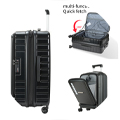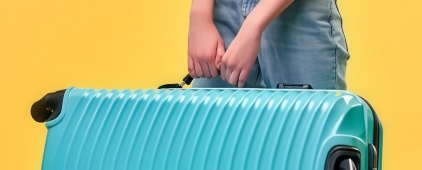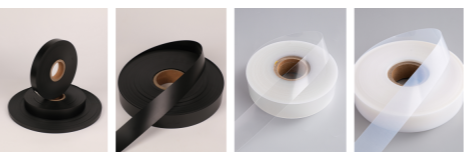How Indestructible Materials Can Reinforce Your Luggage for Long-Term Use
How Indestructible Materials Can Reinforce Your Luggage for Long-Term Use
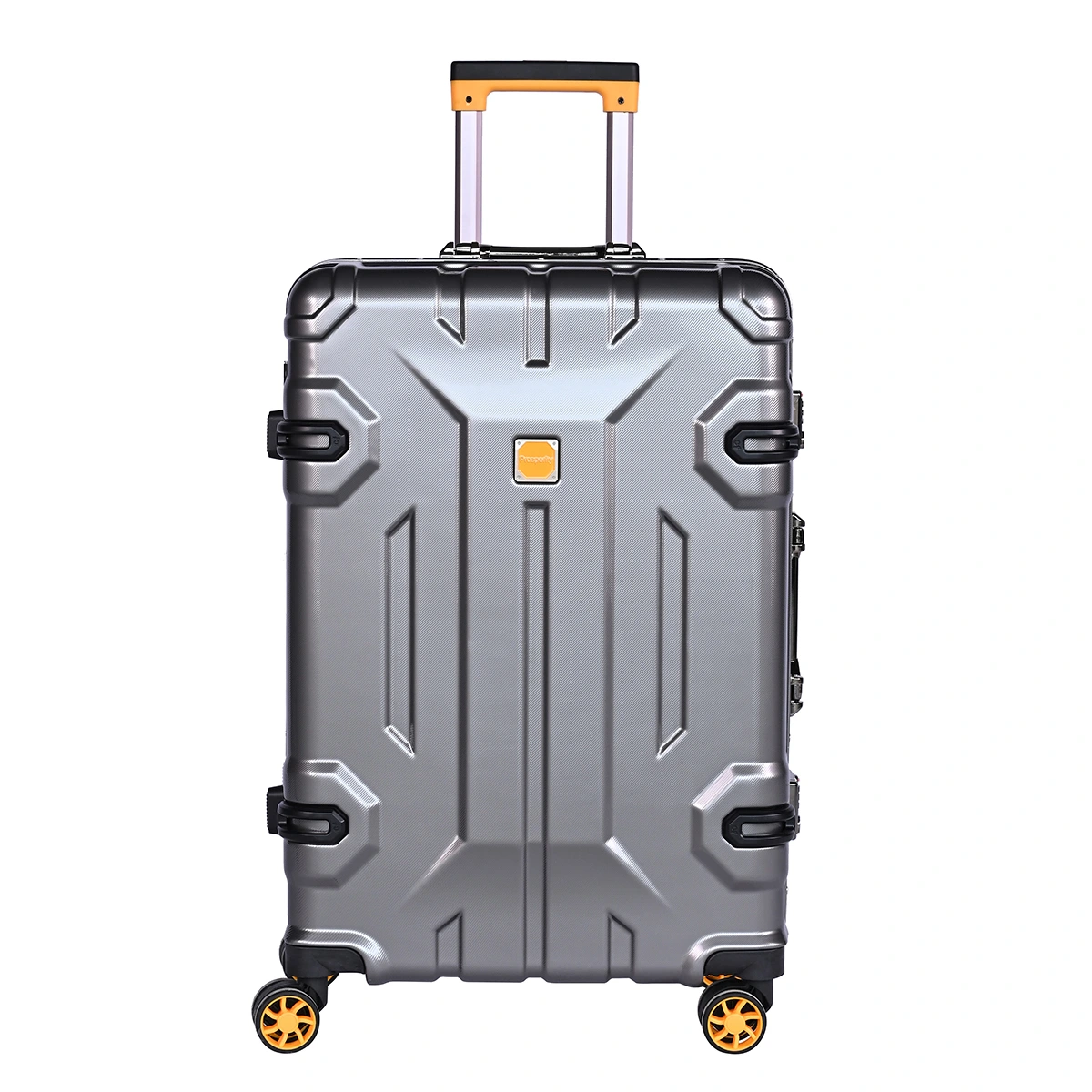
In the world of travel, toughness is important. Very tough luggage mixes modern materials like polycarbonate, aluminum, and mixes with clever building to handle rough use, very different weather, and years of service. Whether you fly often or seek adventure, buying top-performing luggage gives dependability, money saved, and calm feelings. Learn what makes a travel bag truly strong—and why it counts for your trips.
What Makes a Material Indestructible in the Context of Luggage?
When talking about travel items, the word “indestructible” means luggage that can take very hard physical pressure, big temperature changes, and careless treatment without breaking its shape or use.
Characteristics That Define Material Strength and Durability
Very tough luggage materials are known by their pulling strength, shock toughness, bendiness under force, and power to keep shape after bending. These things fight splits, dents, and scrapes even under heavy weight or falls from tall places. A truly long-lasting thing also fights sun harm and weather extremes. This makes it good for many travel places.
Commonly Used Indestructible Materials in Modern Luggage
Polycarbonate is used a lot because it is light but shock-strong. Aluminum is another good choice known for its stiffness and smooth look. Heat-moldable plastics like ABS (Acrylonitrile Butadiene Styrene) offer cheap toughness. But they are often mixed with polycarbonate for better work. Mixed things—blends of carbon strands or glass strands—are appearing in top luggage for their better strength-to-weight balance.
How Material Choice Affects Performance Over Time
Over time, poor things break down with repeated use: zippers stop working, outsides split, and grips snap. In comparison, very tough materials keep their shape even after many years of regular travel. This toughness makes sure the travel bag keeps protecting its stuff despite long contact with difficult situations. Pengteng understands these work patterns. They use modern materials like strengthened polycarbonate mixes and airplane-level aluminum to promise long-time toughness in all products.
Why Is Durable Luggage Essential for Frequent Travelers?
Regular travelers put their luggage through repeated airport moving systems, changing weather, and small storage spaces. These situations test every piece of a travel bag.
The Impact of Travel Conditions on Standard Luggage
Normal luggage often gets cracked outsides, broken rollers, or ripped cloth after just several journeys. Rough treatment during loading or unloading or contact with water can badly harm non-strengthened carriers.
Cost-Efficiency of Investing in Long-Lasting Suitcases
While top very tough luggage might cost more at first, it stops the need for many replacements. Over time, this means big savings—not only money but also fewer travel problems from broken bags.
Benefits of Low-Maintenance, High-Resilience Designs
Very tough luggage usually needs little care thanks to stain-fighting surfaces and rust-proof metal parts. This makes them perfect for work travelers or thrill hunters who value trust over looks alone. Pengteng answers these worries. They build easy-care designs with rough outsides and strengthened parts made especially for many-time travelers.
How Do Different Indestructible Materials Compare?
Picking between things depends on your travel habits—whether you care more about weight saving or top protection.
Polycarbonate vs. Aluminum: Pros and Cons
Polycarbonate is light and bendy under pressure. But it might show marks more easily than aluminum. Aluminum cases are very stiff and puncture-resistant. But they tend to be heavier and can dent under hard hits.
Thermoplastic Polymers and Their Role in Impact Resistance
Heat-moldable plastics like ABS are low-cost yet less long-lasting when used alone. However, when joined with polycarbonate sheets or covered with special finishes, they give great shock soaking while keeping prices fair.
Innovations in Composite Materials for Travel Gear
Newer mixed things like carbon strand-strengthened plastics offer unbeatable strength while being lighter than both aluminum and old plastics. These are more and more used in top luggage models for special travelers. Pengteng’s research group adds latest mixed technologies into its item making steps. They give highest protection without losing portability.
What Features Should You Look for in Reinforced Luggage?
Material isn’t everything—shape design matters just as much for making luggage truly strong.
Structural Components That Enhance Durability
Look for strengthened edges, double-layered shells, inside supports made from airplane-level aluminum mixes, and pressed parts. These spread pressure evenly across the bag’s body.
Zippers, Handles, and Wheels: Often Overlooked Weak Points
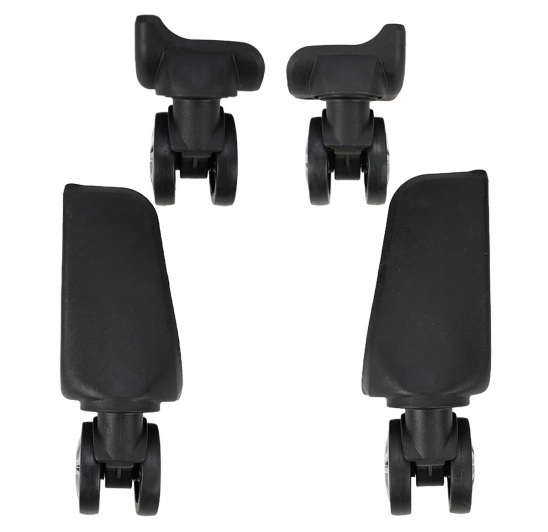
Even the strongest outside fails if zippers open mid-flight or rollers stick on uneven ground. Choose YKK zippers known for trust; pull-out handles made from stainless metal; 360-degree spinner wheels with closed parts. These give smooth movement under load.
The Role of Interior Design in Supporting External Shells
Smart inside plans with tight bands and soft sections help balance weight spread inside. This lessens stress on outside walls during moving. Pengteng strengthens every key point—from zippers to wheel holders. This ensures full shape strength under all situations.
How Can You Maintain the Longevity of Your Indestructible Luggage?
Even the strongest carriers gain from good care habits that stop early damage.
Cleaning and Storage Best Practices
Wipe your carrier after each trip with gentle soap and water. Keep away from rough cleaners that could hurt finishes. Store standing up in cool dry spots away from direct sunlight or wetness. These things may weaken glues over time.
When to Repair vs. Replace Components
Change worn rollers or handles quickly using maker-approved pieces. Do not risk more harm through self-fixes. If splits show in hard shells—even very tough ones—ask about guarantee help before throwing them away.
Tips to Avoid Wear from Frequent Use
Do not overfill your bag. That strains joins. Use packing boxes for better order. Roll clothes instead of folding them flat. This makes more space while lowering inside pressure spots during closing. Pengteng gives after-buy help. This includes fix kits and care booklets made especially for making item life longer.
Who Is Pengteng and Why Choose Them as Your Luggage Supplier?
As a trusted name worldwide in travel items, Pengteng has made a name around good craft backed by tool progress.
Company Background and Commitment to Quality
With years of experience making top travel goods, Pengteng focuses on strict quality checks at every making step. This goes from raw stuff finding to final putting together. They give steady work everywhere.
Pengteng’s Use of Advanced Materials and Manufacturing Standards
By using airplane-level aluminum mixes, strengthened polycarbonates, exact-shaped parts—and following closely to ISO-checked steps—Pengteng sets goals others follow instead of chase.
Customer Satisfaction and Global Reach
With shipping webs covering many lands and quick help doors open always, Pengteng promises calm feelings before—and after—every buy trip starts.
Conclusion
Making truly strong luggage needs more than picking hard things. It needs careful building across every piece from outside shape down to roller parts. Regular travelers gain much from putting money into such plans. They see fewer replacement costs and calm feelings knowing their stuff stays safe anywhere they go. With names like Pengteng leading new ideas through modern mixes and careful making rules, picking dependable gear has never been simpler. It has never been wiser for today’s travelers wanting work without trade-offs.
FAQs About Indestructible Luggage
Q1: What is the most durable material used in luggage today?
A: Polycarbonate strengthened with mixed sheets or carbon strand plastics is now among the most long-lasting things used. This is because of its high shock toughness plus light traits.
Q2: Can indestructible luggage still get damaged during air travel?
A: While no thing is fully safe from huge force or bad use by bag workers, very tough luggage greatly lowers the chance compared to normal types. It takes shocks better.
Q3: Is reinforced luggage heavier than standard options?
A: Not always—modern mixes let makers like Pengteng keep low weights while adding toughness through smart shape rather than just bulk.


